A novel experimental model of MetALD in male mice recapitulates key features of severe alcohol-associated hepatitis
- PMID: 38896082
- PMCID: PMC11186819
- DOI: 10.1097/HC9.0000000000000450
A novel experimental model of MetALD in male mice recapitulates key features of severe alcohol-associated hepatitis
Abstract
Background: The recent increase in the incidence of alcohol-associated hepatitis (AH) coincides with the obesity epidemic in the United States. However, current mouse models do not fully replicate the combined insults of obesity, metabolic dysfunction-associated steatohepatitis, and alcohol. The aim of this study was to develop a new mouse model that recapitulates the robust inflammatory and fibrotic phenotype characteristic of human MetALD.
Methods: Eight- to 10-week-old male C57BL/6 mice were fed chow or high fat-cholesterol-sugar diet (metabolic dysfunction-associated steatohepatitis diet) and in each group, some received alcohol in drinking water (ad libitum) and weekly alcohol binges (EtOH) for 3 months. The liver was assessed for features of AH.
Results: MetALD mice displayed increased liver damage indicated by highly elevated ALT and bilirubin levels compared to all other groups. Liver steatosis was significantly greater in the MetALD mice compared to all other experimental groups. The inflammatory phenotype of MetALD was also recapitulated, including increased IL-6 and IL-1β protein levels as well as increased CD68+ macrophages and Ly6G+ neutrophils in the liver. Sirius red staining and expression of collagen 1, alpha-smooth muscle actin indicated advanced fibrosis in the livers of MetALD mice. In addition, indicators of epithelial-to-mesenchymal transition markers were increased in MetALD mice compared to all other groups. Furthermore, we found increased ductular reaction, dysregulated hedgehog signaling, and decreased liver synthetic functions, consistent with severe AH.
Conclusions: Alcohol administration in mice combined with metabolic dysfunction-associated steatohepatitis diet recapitulates key characteristics of human AH including liver damage, steatosis, robust systemic inflammation, and liver immune cell infiltration. This model results in advanced liver fibrosis, ductular reaction, decreased synthetic function, and hepatocyte dedifferentiation, suggesting a robust model of MetALD in mice.
Copyright © 2024 The Author(s). Published by Wolters Kluwer Health, Inc. on behalf of the American Association for the Study of Liver Diseases.
Conflict of interest statement
Gyongyi Szabo consults and owns stock in Zomagen Bioscience/Ventyx Biosciences. She advises and owns stock in Glympse Bio, Inc. (acquired by Sunbird Bio) and Satellite Biosciences. She consults for Durect Corporation, CYTA Therapeutics, Merck, Pandion Therapeutics, Inc., Pfizer, Terra Firma, LabCorp, Takeda, NIAAA Board of Scientific Councilors, and Yale University School of Medicine. She advises Surrozen, Intercept, Evive, Baylor Texas Medical Center, University of Pennsylvania, and Nature Reviews gastroenterology and hepatology. She received grants from NIAAA and NIA. She received royalties from Springer Nature Group and UpToDate Inc. The remaining authors have no conflicts to report.
Figures


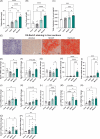
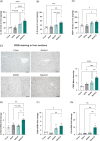

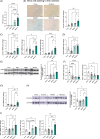
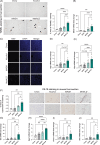
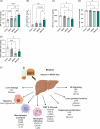
References
Publication types
MeSH terms
Substances
Grants and funding
LinkOut - more resources
Full Text Sources

